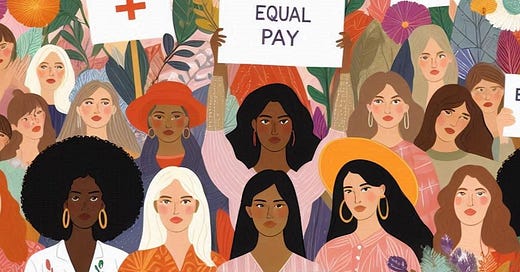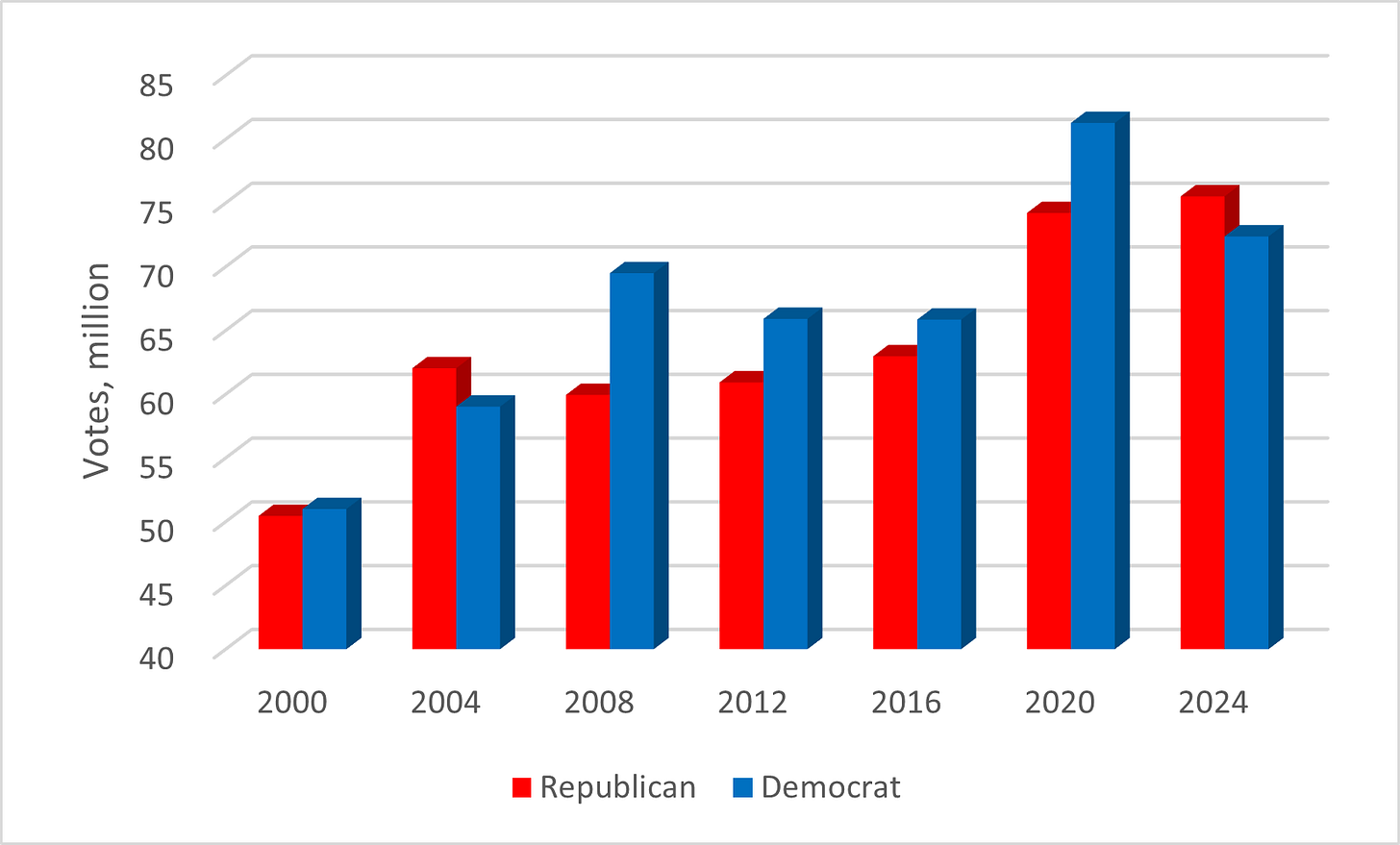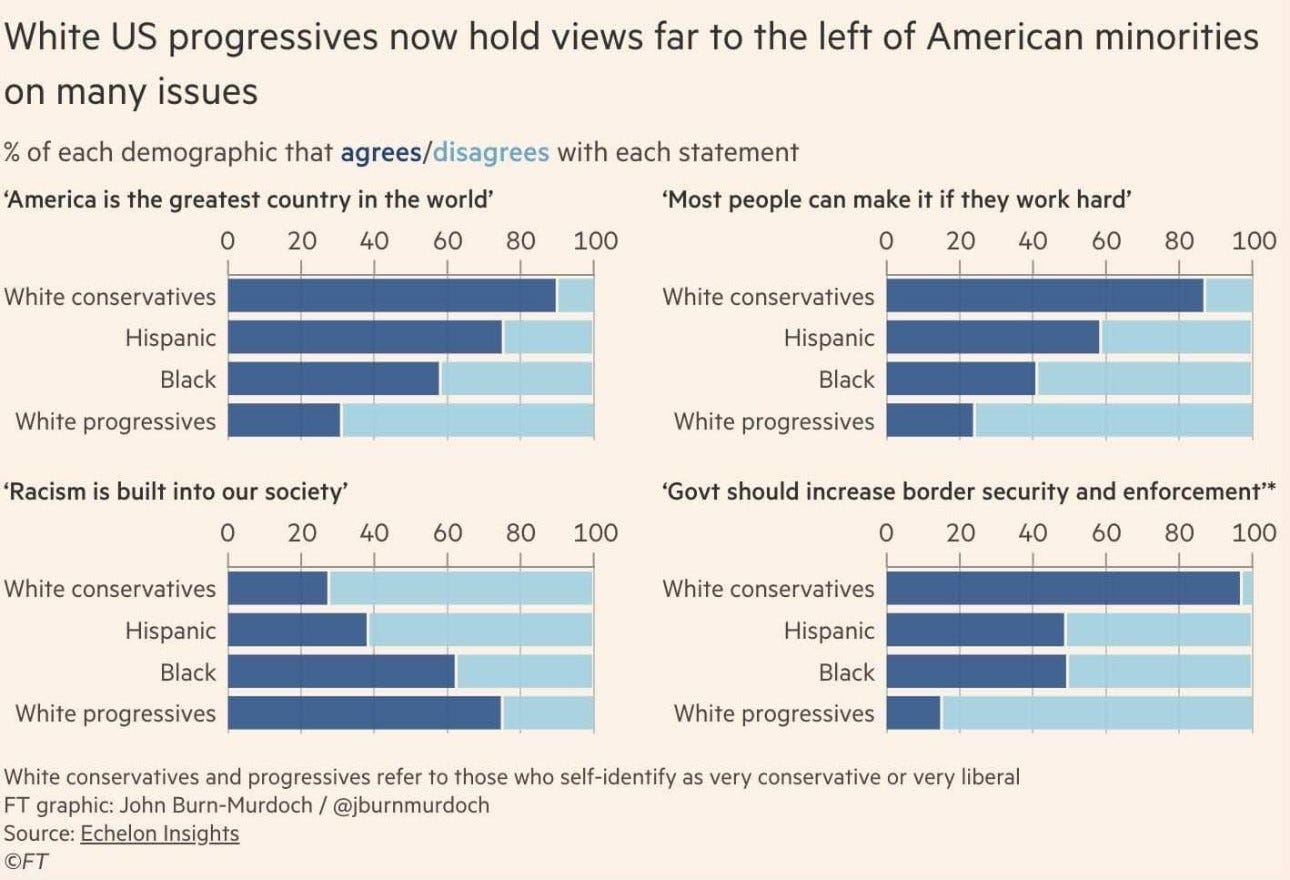Do We Care Enough About Women’s Rights?
How do you answer a young woman asking why her rights were rejected? It's time to take The Sniff Test.
Dollars versus Rights
My daughter asked an insightful question after last week’s election.
“Is a few dollars in the pocket worth more than women’s rights?”
She knows her social media feed is not a voter poll. That makes her smarter than 90% of the UK media. She has no time for “Kamala is Brat” memes. Her concern is the recent assault on the right to abortion that enjoyed federal protection for 50 years.
I try to avoid assuming to know why others vote and I prefer to focus on trends rather than another election analysis. My daughter’s question breaks down into what are women’s rights and why is inflation more important. The answers lie in states rights, assumptions about the electorate and whether we are free.
States Rights and False Assumptions
My daughter hopes to study abroad. Florida is an option, but her friends ask if she can in good conscious live there. The state was one of three to reject protection of abortion rights, albeit with 57% in favour falling short of the 60% requirement in the state.
In all 10 states that held an abortion rights vote, more people supported it than voted for Harris. Two factors drove a wedge between the issue and the candidate. The first was states rights and the second a false assumption.
A Conservative Constitution
The 10th amendment limits the powers of the federal government - the President and Congress - to those granted in the Constitution. Anything else is an issue for the states. States rights have a chequered history, having been the justification for slavery and segregation. Trump avoided talking about abortion by saying it is a states rights issue.
The Rest is History podcast drew a parallel between Trump and George Wallace, a segregationist and independent presidential candidate in 1968. Wallace raged against northern liberals pushing a progressive agenda on ordinary folk and his speeches had an undercurrent of violence. The difference is that while Trump said similar things, he has the backing of a national party machine and his states rights message worked.
Trump convinced enough women to vote for him by committing not to introduce a nationwide abortion ban. We know this from exit polls and surveys, which assume an air of truth because there is no other way of interpreting results. The most accurate polls ask Americans how their neighbours would vote, because these reveal hidden preferences. There are no equivalents after the election.
States rights are interpreted in the courts. There is a high hurdle for constitutional amendments and as a result of the close split between red and blue, the last amendment was 32 years ago. The battle is now about the interpretation of the Constitution and the Supreme Court is the ultimate authority.
The Supreme Court stands removed from everyday politics. Its justices are appointed for life, it chooses which cases to take and its rulings echo for generations. Trump was able to appoint three justices in his first term, which gave the Court a conservative bias. The new look encouraged several states to limit abortion and challenge the 1973 Roe vs Wade ruling, and the Court upheld their rights. Harris would have fought this and there was talk of packing the Court with liberal judges to prevent it blocking progressive legislation.
It's not clear this threat to meddle in constitutional norms damaged Harris, but it undermined claims that Trump alone was a threat to democracy. The appeal to states rights shored up Trump’s support among those who are resistant to big government and Washington D.C. This blocked Harris’ strategy of winning enough female votes to capture the seven swing states.
Outside the Overton Window
The false assumption that Democrats made was they had a mandate for a radical agenda. The chart shows the total votes cast for the main parties’ Presidential candidates in the last seven elections. The Democrats won a majority from 2008 to 2020.
This was taken as evidence of an emerging liberal majority, supported by a rising share of minorities in the electorate and the trend for people to remain progressive into middle age. The surge in Democrat support in 2020 was taken as the final triumph, when in hindsight it was a backlash against Covid restrictions.
Women’s rights are a liberal cause and about much more than abortion. Nikki Haley, Trump’s closest but not close Republican challenger, spoke out against the machismo of his campaign. Her easy dismissal leads commentators to project a desire for authoritarian leaders onto half of the electorate, but this is a wild assumption. It’s more important to look at the opinions the Democrats project onto their supporters.
Transgender rights are a direct challenge to many women. They worry about boys in the girl’s locker room, men in women’s prisons, and expect to be told if their child is encouraged to undergo chemical castration. J.K. Rowling takes more abuse than most for pointing this out, but has a reasonable response.
Men also oppose the merging of genders. Minorities are often more religious and socially conservative than the white population and Trump’s support rose among Asian, Latino and Black men. Abortion is hidden among a crowd of issues about rights that the majority of the population is not yet ready to embrace.
This should have been obvious from last year’s backlash against transgender marketing by big brands. Bud Lite and Nike both tied up with Dylan Mulvaney, a transgender influencer with 10 million followers, but dropped the association following a storm of criticism. Anheuser-Busch Inbev, which makes Bud Lite, saw sales drop more than 10% in one quarter in mid-2023. Adidas faced a boycott after advertising women’s swimwear with a male model.
The media response is hysterical, calling out transphobia and hate crimes. It is run by people with extreme positions on both left and right and as the FT points out, they are far more radical than those they claim to represent.
It’s not a hate crime to not buy a swimsuit or to dislike an advert. Ranking adverts is what Superbowl halftime and Christmas campaigns are all about. The error is to be too far outside the Overton Window. Transgender rights may become the norm, but not yet.
Trump addressed his weakness with women, while Democrats were blind to theirs. My daughter’s generation may separate abortion and transgender issues, but they are a minority for now. Many of them also have the luxury of not worrying about economic independence.
A Basement Rebellion
My argument last week that the election was about the cost of living is now accepted wisdom. Trump’s tariff and tax policies are expected to be inflationary and may cost Republicans the next election. This is too simple an understanding for political pundits who want emerging majorities and seminal trends, but that does not make it wrong. Other issues are subcurrents.
Inflation concerns everyone. If you cannot feed your familiar then morality is secondary, especially other people’s. Give us food, shelter, security and education and we can turn to other matters. Inflation in food and fuel swings elections because it is important to enough people, even when a majority has a comfortable standard of living.
People rebel over the price of bread, not access to abortion. It is difficult to determine how many abortions there are in the US, in part due to the stigma attached to them, but it is less than a million a year. There are 345 million mouths to feed.
After ensuring enough food, governments suppress rebellion through property rights. We require the state to protect our claim on property and we tolerate a lot in return for this security. We mistake an ability to accumulate wealth as freedom, when in fact it is an increasing dependency on state protection. Even authoritarian regimes know to allow home ownership.
This is a major reason why people become more conservative with age. They have more at risk and therefore less reason to rebel. My daughter is not yet economically independent, and having few concerns about money allows her a freedom to ask challenging questions about human rights. It also makes it harder to understand the answers.
The trend for staying liberal for longer is a head fake. It is not a sign of an emerging progressive majority, but a reflection of how hard it is to get on the property ladder. Adults living in parental basements are frustrated and angry, but have an economic freedom that allows them to express this.
The Presidential election was not about women’s rights, and what determines those rights is more complex than being for or against abortion. One party recognised the immediate issues that would capture the marginal voters. The other is captured by an ideological fervour that stretches for a politics that is just out of reach.









